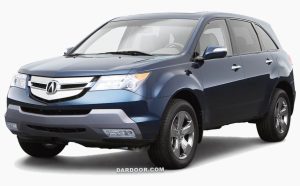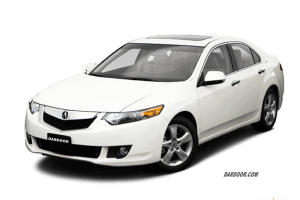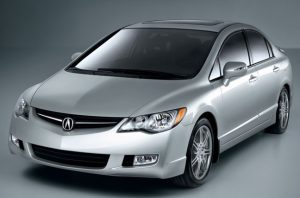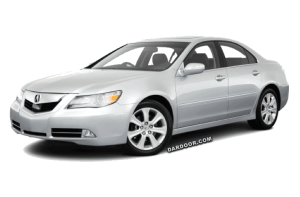Access the official OEM workshop and service manual with the wiring diagram for the 2019-2022 Acura RDX, available in an easy-to-navigate PDF format.
2019-2022 Acura RDX Repair Manual
$50.00
Original OEM Service and Workshop Repair Manual: 2019-2022 Acura RDX Repair manual
Complete with Wiring Diagram – PDF Format
Your Essential Resource for Acura RDX Repairs and Service
Access the official OEM workshop and service manual with the wiring diagram for the 2019-2022 Acura RDX, available in an easy-to-navigate PDF format. This manual is the same trusted guide used by Honda technicians for diagnosing, servicing, and repairing your Acura RDX.
| File Format | |
| File Language | English |
| You’ll Get | 1.02 GB |
| Pages Count | 7,800 |
| Delivery Method | Instant Download |
Key Sections
- Engine and Powertrain: Repair and rebuild guides for petrol models.
- Suspension and Steering: Adjustments, replacements, and performance tuning.
- Brake Systems: Detailed maintenance for standard and performance brakes, including ABS.
- Climate Control Systems: HVAC diagnostics and servicing instructions.
- Infotainment and Connectivity: Updates, repairs, and troubleshooting for modern multimedia systems.
Why Choose This Manual?
- Dealer-Quality Information: Trusted by certified Honda technicians worldwide.
- DIY Friendly: Easy-to-follow instructions for both enthusiasts and professionals.
- Comprehensive Coverage: Includes every aspect of vehicle repair and maintenance.
- Portable and Convenient: PDF format for instant access on your devices.
Benefits of This Manual
- Save time and money by following professional-grade repair instructions.
- Gain confidence in performing maintenance and repairs yourself.
- Extend the lifespan of your Acura RDX with proper servicing.
- Stay prepared for any issue with clear diagnostics and troubleshooting.
Download the 2019-2022 Acura RDX Service and Workshop Manual today and ensure your Acura stays in top condition with this indispensable repair guide.
Table of Contents : 2019-2022 Acura RDX Repair Manual
Sample Pages
Common Issues Reported By Owners
The 2022 Acura RDX is a luxury compact SUV that has received generally positive reviews for its performance, features, and value. However, some owners have reported common issues that may be helpful to consider:
1. Infotainment System Issues
- Issue: The 2022 RDX uses an infotainment system that has been reported to be unintuitive and prone to glitches. Issues like unresponsive touchpads, slow navigation, or difficulty pairing smartphones are commonly mentioned.
- Solution: Software updates from Acura may address some of these problems. Owners may also find it helpful to reset the system or seek assistance from a dealership for technical support.
2. Transmission Hesitation
- Issue: Some drivers have experienced hesitation or delayed shifting, especially during low-speed acceleration. This is sometimes associated with the 10-speed automatic transmission used in the RDX.
- Solution: Transmission fluid flushes or software updates may help alleviate shifting issues. If the problem persists, it’s best to visit an Acura dealership for a thorough diagnosis.
3. Ride Quality and Suspension
- Issue: A few owners have reported that the ride can feel firm or bumpy, especially when driving over rough roads. The suspension may feel less smooth compared to some of its competitors.
- Solution: If the ride is too harsh, consider adjusting tire pressures to manufacturer specifications or using different tire types for a smoother ride.
4. Wind Noise
- Issue: Some owners have reported excessive wind noise at higher speeds, particularly around the window seals and side mirrors.
- Solution: If the issue is due to worn or improperly sealed door/window seals, it may be resolved by replacing the seals through a dealership service.
5. Electrical Problems
- Issue: Some electrical issues have been reported, such as malfunctioning sensors, issues with adaptive cruise control, or problems with the automatic emergency braking system.
- Solution: These issues may be addressed by recalibrating the sensors or performing software updates. A visit to a dealership for diagnosis and repairs may be required.
6. Paint and Exterior Quality
- Issue: A few owners have noted that the paint quality, particularly on the rear bumper or side panels, can be susceptible to scratches and chips more easily than expected for a luxury vehicle.
- Solution: Regular waxing and using protective film can help reduce the likelihood of paint damage.
7. Oil Leaks
- Issue: While not widespread, some owners have reported minor oil leaks from the engine or the oil filter area.
- Solution: If an oil leak is detected, it’s best to get the gasket or filter replaced. Regular oil changes can also help ensure the engine is running smoothly.
8. Battery Drain
- Issue: Some owners have reported issues with the vehicle’s battery draining unexpectedly, especially after leaving the vehicle unused for a few days.
- Solution: The battery should be inspected for potential faults, and if the vehicle isn’t driven regularly, using a battery maintainer may help prevent draining.
9. Excessive Cabin Noise
- Issue: A few reports mention excessive cabin noise, especially from the rear, when driving at highway speeds. This can be attributed to the lack of soundproofing materials or the design of the rear door seals.
- Solution: Checking door seals for wear and ensuring all weather stripping is intact may help reduce cabin noise.
10. Fuel Efficiency
- Issue: While the 2022 RDX has decent fuel efficiency for its class, some drivers have reported lower-than-expected mileage, especially when using the all-wheel-drive system.
- Solution: To improve fuel efficiency, maintain tire pressure, reduce excess weight, and drive conservatively. If fuel consumption is significantly higher than expected, a dealership inspection may be needed to check for issues like fuel system leaks.
Overall, the 2022 Acura RDX is a well-regarded luxury SUV, and while there are some common issues, they tend to be manageable with proper maintenance and attention. Regular servicing and addressing small problems early can help maintain the vehicle’s performance and longevity.
Common DTCs for 2019-2022 Acura RDX
For the 2019-2022 Acura RDX, Diagnostic Trouble Codes (DTCs) are tied to specific issues related to the vehicle’s systems, including the engine, transmission, emissions, safety systems, and more. Below is an overview of common DTCs and potential causes for these models:
Engine and Emissions DTCs
- P0171 – System Too Lean (Bank 1)
- Causes:
- Vacuum leaks
- Faulty Mass Air Flow (MAF) sensor
- Clogged fuel injectors
- Faulty oxygen (O2) sensor
- Low fuel pressure
- Causes:
- P0300-P0304 – Cylinder Misfire Detected
- Causes:
- Faulty spark plugs or ignition coils
- Low compression
- Fuel delivery issues
- Carbon buildup on intake valves (common in direct injection engines)
- Causes:
- P0420 – Catalyst System Efficiency Below Threshold (Bank 1)
- Causes:
- Worn catalytic converter
- Faulty upstream or downstream O2 sensors
- Engine misfire or running rich/lean
- Causes:
- P0496 – EVAP System High Purge Flow
- Causes:
- Faulty purge valve
- Leaks in the EVAP system
- Faulty pressure sensor
- Causes:
Transmission DTCs
- P0730 – Incorrect Gear Ratio
-
- Causes:
- Low transmission fluid
- Damaged transmission solenoids
- Internal transmission issues
- Causes:
- P0847 – Transmission Fluid Pressure Sensor/Switch “B” Circuit Low
-
- Causes:
- Faulty pressure sensor
- Low or contaminated transmission fluid
- Electrical or wiring issues
- Causes:
Safety and Driver Assistance System DTCs
- U3000 – Control Module Malfunction
-
- Causes:
- Faulty module (e.g., ABS, VSA, or SRS)
- Software issues
- Power supply issues (battery or alternator)
- Causes:
- C0021 – Brake System Control Module Malfunction
-
- Causes:
- Faulty brake sensors
- Communication issues between the brake system and the ECU
- Wiring problems
- Causes:
- B1-XXXX Series – Airbag System Codes
- Causes:
- Faulty SRS components (e.g., sensors, airbag modules)
- Loose or damaged connectors
- Causes:
Turbocharger DTCs (2.0L Turbo Engine)
- P0299 – Turbocharger Underboost Condition
-
- Causes:
- Boost leak (e.g., in the intercooler or piping)
- Faulty turbo wastegate
- Restricted exhaust flow or faulty catalytic converter
- Causes:
- P2262 – Turbocharger Boost Pressure Not Detected
-
- Causes:
- Faulty boost sensor
- Malfunctioning turbocharger
- Vacuum actuator issues
- Causes:
Diagnosis and Repair Steps
- Scan for DTCs: Use a high-quality OBD-II scanner compatible with Acura systems.
- Inspect Related Components: Look for visible signs of damage, leaks, or loose connections.
- Test Components:
- Use a multimeter or test equipment for sensors and actuators.
- Verify turbocharger boost levels (if applicable).
- Perform Software Updates: Acura vehicles often require ECU (Engine Control Unit) or TCU (Transmission Control Unit) updates to resolve some DTCs.
- Replace Faulty Parts: Install genuine Acura or OEM parts for the best performance.
- Clear Codes and Test Drive: Reset the ECU and confirm repairs by driving under various conditions.













Reviews
There are no reviews yet.